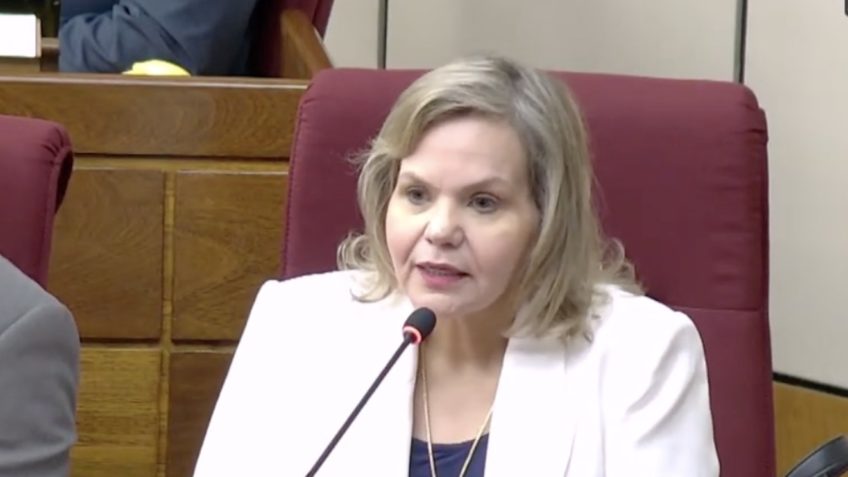
The country was considering restricting the activity, but uncertainties in negotiating the tariff with Brazil make the option more attractive
Paraguay is considering using the excess energy produced at the Itaipu hydroelectric plant to mine bitcoins. The plant’s energy production is shared equally with Brazil, but historically, the country uses only 17%. The remainder is sold to the Brazilian side for an amount agreed annually between the parties.
The Itaipu treaty, created in 1973 for the construction of the plant, prohibits Paraguay from selling surplus energy to other countries, being obliged to pass it on to Brazil at cost price. However, the relationship between the 2 countries that operate the plant is strained, and negotiations to define the 2024 tariff have not yet been concluded.
Brazil wants the lowest possible tariff, while Paraguay’s interest is the opposite. This uncertain scenario made the Paraguayan Congress look for alternatives on what to do with the excess energy produced at the plant and cryptocurrency mining appears as a more profitable solution than giving in to Brazilian pressure for a lower energy price.
Bitcoin mining is an energy-intensive process. Computers that perform this task run for long periods of time and require cool environments to perform mining. This high demand causes instability in the electrical grid in regions where “cryptocurrency mines” are concentrated.
To the Poder360the partner at Cbie (Brazilian Infrastructure Center) Advisory, Pedro Rodrigues, explained that bitcoin mining was first established in China, which offered a low energy cost and transformed the country into the main hub in the world.
However, the Chinese government restricted the activity due to the problems the operation causes, such as instability in the electrical system and an increase in electricity bills. The result was a migration of operators to other places that offer low-cost energy, including Paraguay.
“Paraguay has cheap energy because of Itaipu, they do not consume all the energy they are entitled to from the plant. As energy is cheap, the guy who wanted to mine bitcoin went to Paraguay.”declared Rodrigues.
The North American state of Texas welcomed most of the miners who left China, but the result was similar to what happened in the Asian country. The State did not restrict the activity so strongly, but imposed limitations such as defined times for operating supercomputers.
In October last year, bitcoin mining company Sazmining announced that it had plans to set up shop in the South American country. According to the company, Paraguayan infrastructure is not yet as developed, but the cost of energy in the country drives mining operations.
Recently, Paraguay was following the same path as China. The country’s legislative chamber introduced a bill on April 4 to suspend mining for 180 days. The reason: disruptions in the country’s electricity supply.
The progress of the proposal was blocked by the country’s senators. The assessment is that the activity could be beneficial if Paraguay increases its use of the energy produced by Itaipu. The senators’ estimate is that this energy can be negotiated to local miners for double the price. Today this negotiation is at US$ 17.66 per kW/month.
In a session held on Wednesday (April 10, 2024), senator Lilian Samaniego stated that the benefits and problems of bitcoin mining will be debated in a public hearing on April 23.
Understand the negotiation about Itaipu
The governments of Brazil and Paraguay are negotiating new rules for the Itaipuadministered by the state-owned Itaipu Binacional and located on the border between the 2 countries, in Foz do Iguaçu (PR). The discussions involve defining the tariff that will be charged for energy produced in 2024, and reviewing the so-called annex C of the hydroelectric construction treaty.
Setting the tariff is the most urgent point. The rate, called Cuse (Unit Cost of Electricity Services), is defined every year, in an agreement between Brazil and Paraguay. Cuse makes up 94.61% of the transfer price for the hydroelectric plant, with the remainder being mainly made up of debt payments, paid off in February 2023.
It is charged in dollars for the energy produced, in a calculation that considers, among other points, the plant’s operating expenses and portions of the debt incurred for the construction of the dam.
The president of Paraguay, Santiago Penacame to Brasília on January 15th for a meeting with the president Luiz Inácio Lula da Silva (PT), whose agenda was tariff negotiation. The country wants to increase the rate from the current US$16.71 per kW/month to US$20.75, that is, an adjustment of 24%.
On that occasion, Lula recognized there are differences between the 2 countries on the topic. The Brazilian side refuses to give any increase. The federal government made a counter-proposalbut to reduce the tariff paid for hydroelectric energy by 11.6%, reaching US$14.77.
Meetings with negotiators from the 2 countries on the tariff have been held almost weekly. On the Brazilian side, ministers Alexandre Silveira (Mines and Energy) and Mauro Vieira (Foreign Relations) actively participate in the negotiations and have already warned to Paraguay that no increase will be accepted.
Annex C
The discussion, however, goes beyond setting tariffs for 2024. Countries also need to redefine the terms of Annex C of the Itaipu Treaty, which establishes the financial bases of the agreement.
This is a less urgent discussion, which Brazil argues should only be done after the 2024 tariff is defined. Paraguay, on the other hand, wants both decisions to be taken at the same time.
Annex C was signed on April 26, 1973 and was valid for 50 years, having expired last year. Among the points that were defined by the document and that need to be reviewed is the Cuse calculation methodology. Here are the full Annex C (PDF – 88 kB) and your regulation (PDF – 235 kB).
According to the rules in the annex, the calculation should be made considering:
- The annual powers to be contracted;
- The energy to be generated each year;
- The annual amounts corresponding to capital income (profit), royalties and the reimbursement of administration and supervision costs;
- The annual amounts of Itaipu’s debt service;
- Debt service arising from remaining investments, each year;
- Annual operating expenses;
- The balance of the operating account from the previous year.
The documents specify how to calculate the adjustment factor for each of the items above. The so-called royalties These are financial compensations that the Brazilian and Paraguayan governments receive for using the hydraulic potential of the Paraná River for energy production.
Annex C also includes supply conditions, such as the rule that Paraguay is prohibited from selling surplus energy to other countries, being obliged to pass it on to Brazil at cost price. This is because Paraguay entered into debt with Brazil in the process of building the plant.
“The energy produced by hydroelectric use will be divided in equal parts between the two countries, with each country having the right to acquire energy that is not used by the other country for its own consumption”says an excerpt from the regulation in Annex C.
Last year, Santiago Peña even declared that didn’t intend remove the exclusivity clause for the sale of surplus, which has already been considered in the past.
However, if the Brazilian government remains adamant about reviewing the values, Paraguayans may end up opting to end the obligation in search of a country that pays more for its energy.
Source: https://www.poder360.com.br/internacional/paraguai-avalia-usar-energia-excedente-de-itaipu-para-minerar-bitcoin/

